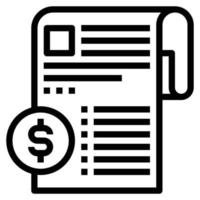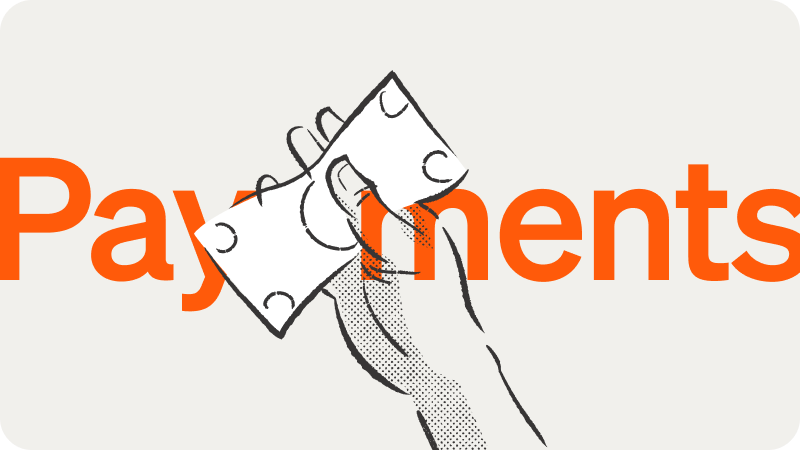The cycle of business involves generating demand, making a sale, and getting paid. This constant pattern is what generates revenue and keeps businesses afloat.
But what’s lost in this oversimplification is taking the time to understand what’s happening at every stage and how it’s impacting performance. Every completed or failed transaction is an opportunity to look back, learn, and improve.
This is where payment analytics come in. The payment analytics process helps businesses understand the details of how customers are interacting with businesses and the insights can help save money, maximize sales revenue, and protect your business from fraudulent activity.
Here’s what you need to know to get started.
Key takeaways
Payment analytics involves centralizing transaction data to gain insights on what customers are purchasing and how they’re paying.
By understanding the data, businesses can tailor their payment processes to improve the experience for themselves and their customers.
Actioning on the data in payment analytics can improve cash flow, speed up payments, and drive business growth.
Defining payment analytics
Payment analytics is the process of collecting, compiling, and presenting payment data to glean actionable insights about your business. Needless to say, that covers a lot of ground, and the payment insights can change depending on the context.
What payments analytics entails varies based on the type of business, size of operations, and payment methods offered—an ecommerce brand will work with different data than a brick and mortar retail shop or service provider.
But generally speaking, payment analytics will involve the same processes of combining data across platforms into a centralized report of the entire payments environment for analysis.
Why do payment analytics matter?
So much of what a business does is towards generating sales. But once a sale is rendered, there’s a wealth of learning potential to guide future efforts.
Within payments data is crucial information about how customers interact with your business. And if you start to divide that payment data up by customer type (e.g., corporate sales versus consumer sales), you get a clear picture of what drives sales and converts people into clients.
Every team that thinks about revenue generation should care about the results. Even the small details about payment types, items purchased, or platform used informs strategies to optimize the sales funnel for better results.

What information is included in payment analytics?
Payment analytics will typically contain the following information:
- Payment method (such as credit card, debit card, or digital payment platform)
- Transaction amounts
- Processing fees
- Transaction volume
- Discounts applied
- Refunds and chargebacks
- Failed or fraudulent transactions
- Time to complete transaction
In addition to this information, businesses may also look into the products or services purchased, the sales channel they went through, or glean demographics from customer data to further understand what’s generating sales, what’s being purchased, and who’s doing the purchasing.
What kinds of questions can payment analytics answer?
Payment analytics can be one of the richest sources of information for your company. Here are just a few of the kinds of questions payment analytics can answer.
For incoming payments from goods
When you’re analyzing payments received from the sale of goods, payment analytics may start with questions such as:
- Are certain products more popular at specific times of the year?
- Which products are most often bought with which other products?
- Are there any key purchases that drive future conversion rates?
The best answers will be prescriptive, meaning they help you decide what to do, such as choosing products for a seasonal newsletter, offering upsells, or separating customers into unique segments for different email campaigns.
For incoming payments from services
For business-to-business (B2B) payments or business-to-consumer (B2C) services, payment analytics can answer questions like:
- Which clients pay within 15 days, 30 days, 60 days, or more? (And will payment reminders shorten the time?)
- Which services lead clients to add other services?
- Is the first service a client buys related to the length of time they remain a client?
Again, the best answers will help you make informed decisions to grow your company. If you’re predicting a cash shortfall, you’ll know which projects to accelerate to get paid quickly. You’ll also know which services bring your best clients in the door, and therefore where to focus your marketing efforts.
For outgoing payments to vendors
When it comes to the payments your business makes to vendors, payment analytics can measure and track your internal efficiency and creditworthiness. You might use it to answer questions like:
- What’s the average amount of time my vendors and providers wait before they get paid?
- How well are we capturing early-payment discounts to bring our costs down?
- Is our accounts payable (AP) turnover rate good enough to receive credit if we need it?
By asking (and answering) questions on both sides of the payment equation—incoming and outgoing—your finance team can be a key strategic driver for your business decisions.
9 examples of how to use payment analytics
The following examples represent just a small window into how digital payment analytics tools and metrics can drive decision-making and business performance.
1. Remove friction from payment processes
Will your business customers pay you more quickly if you offer new payment types? What about consumers? Will they spend more in your online store if you offer the latest payment trends in mobile payments, online payments, digital wallets, or other payment methods?
When you track payment transactions with real-time data, you’ll know whether alternative payment methods—from new payment gateways to American Express points—result in higher revenue. This insight helps you determine what payment type is the most efficient and profitable.
2. Improve the customer experience
For digital payments, fast, easy payment systems are an important part of the customer journey—and equally important to customer satisfaction. Payment analytics can give you a deeper understanding of transaction volume, checkout performance, and payment experience across all your payment channels.
Do some card authorizations fail more often than others? Try making different payment buttons more prominent or leading with different payment platforms to drive a positive impact on sales through checkout optimization.
3. Get paid faster
Do you offer goods or services on credit, whether to business customers or consumers? If you provide goods or services to your customers before you get paid, minimizing late payments can be key to maintaining a healthy cash flow.
Monitoring your payment processing can reveal overdue accounts quickly, giving you a more accurate assessment of your business risk and improving your risk management. It can also show you how additional payment channels, such as credit cards, could help your customers pay you on time while delaying their own cash outflows.
4. Solidify your supply chain
For your outgoing payments, payment data analytics can help you make sure those payments are going where they need to, when they need to, prioritizing your relationships with key vendors. In a supply-chain crunch, vendors you’ve always paid quickly are more likely to prioritize your company in return.
In addition, by tracking key performance indicators (KPIs) like accounts receivable turnover rate that vendors use when deciding whether to extend credit, you can help make sure your company has access to that credit as needed for your business operations.
5. Predict customer behavior
By mining your aggregate transaction data for payment analytics, you can figure out things like which e-commerce offers or discounts drive your maximum revenue, which products do best on which retailers, and how to connect customer interests with the products or services they’ll love.
6. Elevate your forecasting
Historical data is a valuable resource in predicting the future. As you learn more about customer behavior, you’ll be in a better position to predict demand spikes, helping you avoid production shortfalls or bottlenecks. You’ll also learn where your off seasons are, helping you innovate new products or services that can bridge those gaps.
7. Even out your cash flow
Those same data points of spikes and lulls in your seasonal demand can help you predict cash flow surpluses and needs. The more you can plan ahead, the more prepared you’ll be to use tools like revolving credit lines from financial institutions to meet your cash needs.
Predict future cash flow and make business decisions with confidence.
8. Improve your credit score
Thanks to the many ways in which payment analytics help you understand and manage your cash inflows and outflows, the practice can also help you better meet your financial obligations. With a strong payment history, you’ll be in a solid position to maintain a high credit score and take advantage of more favorable financing opportunities.
9. Drive business growth
Ultimately, all of these advantages come together to help you drive business expansion. Offer your customers what they want, expand in your strongest markets, bolster your supply chain, and improve control over your finances, giving you access to the capital you need to grow.

